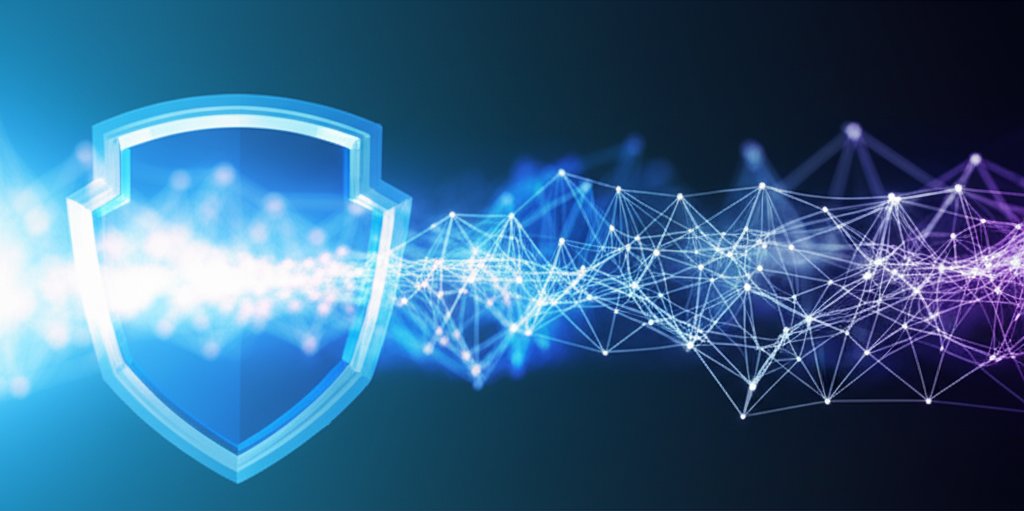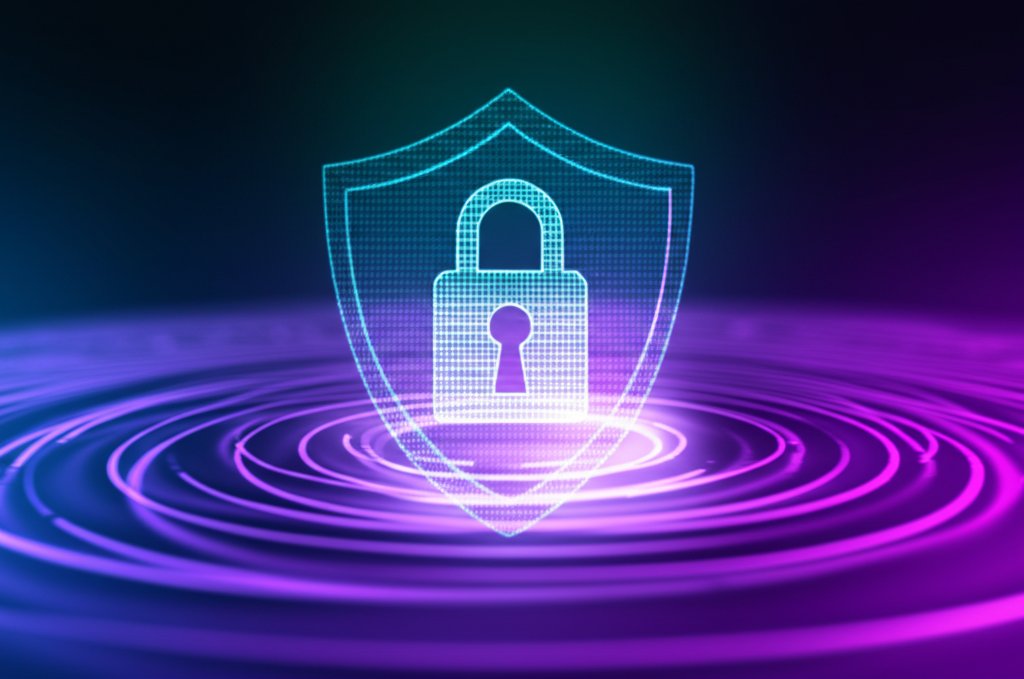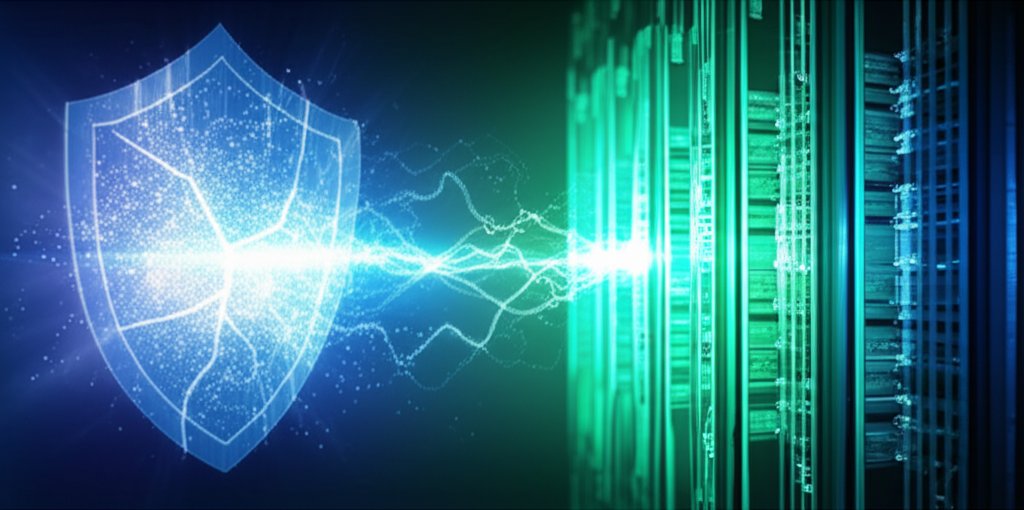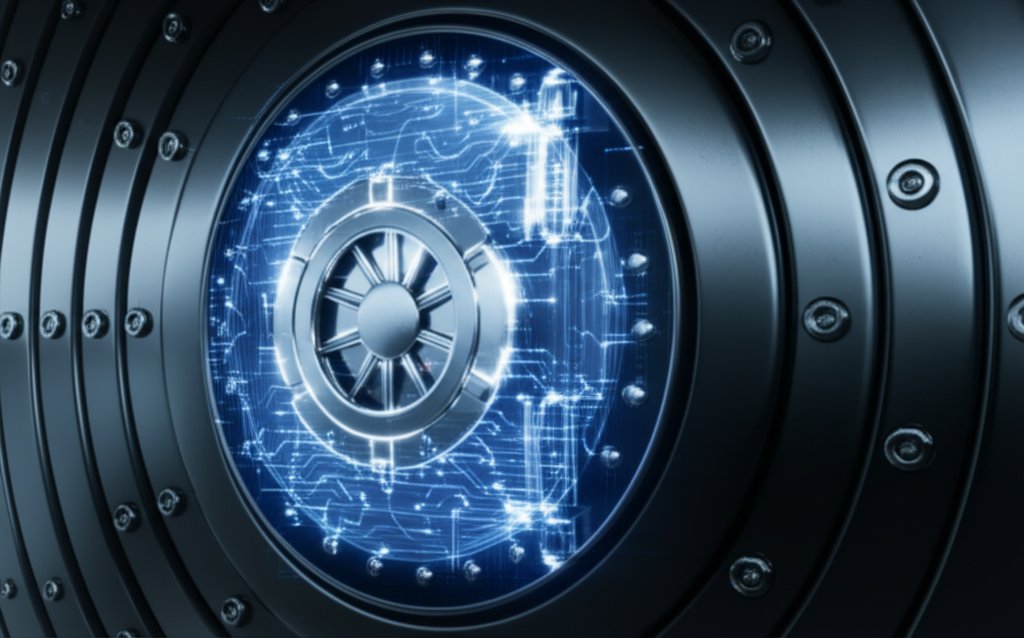The digital world moves fast, and keeping our data safe feels like a never-ending race. Just when we think we’ve got a handle on the latest cyber threats, a new, fundamental challenge emerges on the horizon. Today, that challenge is quantum computing, and it’s set to redefine what “secure” truly means for our digital lives. But don’t worry, we’re not just here to sound the alarm; we’re here to empower you with knowledge and practical steps, like regularly updating your software and asking your service providers tough questions about their security. This isn’t just a topic for governments or big tech; it’s about protecting your personal information and your small business’s future.
Future-Proof Your Data: A Practical Guide to Post-Quantum Cryptography for Everyday Users & Small Businesses
What You’ll Learn
By the end of this guide, you’ll have a clear understanding of:
- Why current encryption methods are vulnerable to future quantum computers.
- What Post-Quantum Cryptography (PQC) is and how it offers a robust solution.
- Why PQC matters specifically for your personal data and your small business operations.
- Concrete, non-technical steps you can take now to prepare for the quantum era.
- Common misconceptions about PQC and what to expect in the coming years.
The Quantum Threat: Why Your Current Encryption Might Not Be Safe Forever
We rely on encryption for almost everything online — from securing our banking transactions to sending private emails, protecting our cloud files, and enabling secure e-commerce. It’s the digital lock on our valuable information. But what if there’s a master key being forged that could pick many of these locks with startling ease? That’s the potential future threat posed by quantum computers.
What is a Quantum Computer (and why should I care)?
Think of it this way: a traditional computer is like a single light switch that can be either ON or OFF, representing a ‘bit’ of information. A quantum computer, on the other hand, is like a dimmer switch that can be ON, OFF, or anywhere in between, and even in multiple states simultaneously! This “somewhere in between” state, called superposition, along with other bizarre quantum phenomena, allows these machines to perform certain calculations at speeds conventional computers can only dream of.
It’s not about being a faster version of your laptop; it’s a fundamentally different way of processing information. For you and me, the impact is what matters: they can solve some specific, very hard mathematical problems incredibly fast — problems that our current encryption relies on for its security.
To visualize this profound difference, imagine a simple infographic illustrating a classical bit as a light switch (on/off) versus a quantum qubit as a dimmer switch (on, off, or anywhere in between, simultaneously). This visual distinction can make the concept much clearer for a non-technical audience.
How Quantum Computers Threaten Current Encryption (and the “Harvest Now, Decrypt Later” Problem)
Many of our most common encryption types, especially those used for securing websites (which rely on public-key algorithms for secure connections), digital signatures, and secure communications (like RSA and ECC), rely on mathematical problems that are currently too complex for even the most powerful supercomputers to break. A sufficiently powerful quantum computer, however, could crack these in a matter of hours or even minutes using algorithms like Shor’s algorithm.
This brings us to the chilling concept of “Harvest Now, Decrypt Later.” Malicious actors — including state-sponsored groups — don’t need a quantum computer today to start causing problems. They can future-proof their strategy by collecting vast amounts of currently encrypted data, knowing that once powerful quantum computers become available, they can simply decrypt all that previously “secure” information. This means sensitive data you exchange today — perhaps your long-term health records, confidential legal documents, proprietary business designs, or even encrypted personal archives like family photos stored in the cloud — could be harvested and decrypted years from now, compromising its long-term confidentiality.
It’s worth noting that not all encryption is equally vulnerable. Symmetric encryption, like AES-256 (commonly used for securing hard drives and VPNs), is considered more resistant. While a quantum computer could theoretically speed up breaking AES, it would likely require such an enormous amount of computational power that it’s not the primary concern. Our focus here is on public-key cryptography, which underpins trust and authenticity online, and is most susceptible to quantum attacks.
Introducing Post-Quantum Cryptography (PQC): The Future of Data Security
So, if quantum computers are coming, what do we do? We don’t throw our hands up in despair; we innovate! That’s where Post-Quantum Cryptography (PQC) comes in.
What is PQC? (Simply Explained)
PQC isn’t quantum computing itself; it’s a new generation of smarter math designed to run on today’s regular, classical computers. Its fundamental goal is to create encryption that even a powerful quantum computer can’t easily break. Think of it as developing new, stronger locks that are impervious to the quantum master key being forged.
How PQC Works (The Basic Idea)
Instead of relying on the “hard-for-classical-computers” math problems that quantum computers excel at breaking, PQC algorithms are built on entirely different kinds of mathematical puzzles. These new puzzles are believed to be extremely difficult for both classical and quantum computers to solve efficiently. We’re talking about problems like finding shortest vectors in complex lattices, or decoding random linear codes. You don’t need to understand the deep math, just the concept: new, quantum-resistant problems mean new, stronger encryption.
The good news is that international bodies like the National Institute of Standards and Technology (NIST) have been working diligently for years to evaluate and standardize these new algorithms. They’ve recently selected a suite of algorithms, including those from the CRYSTALS suite (specifically, CRYSTALS-Kyber for key establishment and CRYSTALS-Dilithium for digital signatures), which are now becoming the global standard for PQC. This standardization means we’ll see these robust new protections integrated into our everyday software and services.
Why PQC Matters for Your Personal & Small Business Data
It’s easy to think of quantum threats as something far off, only for governments or giant corporations. But the reality is, if you use the internet — and who doesn’t? — PQC will eventually affect you.
Protecting Your Personal Data for the Long Haul
Consider the data that needs to remain private for decades: your entire digital footprint, including sensitive cloud storage (think photo albums, financial statements, tax returns), encrypted messages with doctors or lawyers, access credentials for vital online services via your password manager, and even the security of your smart home devices or personal IoT data. All this requires long-term confidentiality. Even encrypted today, if this data is “harvested now,” it could be decrypted later when quantum computers arrive. PQC ensures that your most sensitive, enduring personal data — the kind that impacts your life for years — stays truly secure for the long haul.
Securing Small Business Communications and Customer Information
Small businesses are often seen as easier targets by cybercriminals. If your business relies on encrypted emails, VPNs for remote access, cloud storage for important files, e-commerce platforms handling payments and customer profiles, supply chain communications, internal HR systems, or customer databases, then PQC is a critical concern. This extends to customer relationship management (CRM) systems holding sensitive client data, proprietary intellectual property stored in secure repositories, e-commerce platforms handling payments and customer profiles, supply chain communications, internal HR systems, and even basic email exchanges with clients and suppliers. A data breach, especially one caused by future quantum attacks, could lead to significant financial penalties, legal liabilities, and irreparable damage to your reputation. Protecting your customer data with the latest security standards isn’t just good practice; it’s essential for trust and survival.
PQC Isn’t Just for Governments and Big Tech
The beauty of standardization is that it democratizes security. You won’t need to be a quantum physicist to benefit from PQC. As these new algorithms become standard, they will be seamlessly integrated into the software and services you already use — your browser, your operating system, your cloud provider, your accounting software, or your customer service platform. It’s a future-proof upgrade that will eventually impact everyone, ensuring the digital infrastructure we all depend on remains strong.
Practical Steps You Can Take: A PQC Readiness Checklist
So, what can you, as an everyday internet user or a small business owner, actually do right now? Plenty! It’s about being proactive and informed.
-
Stay Informed and Aware (The First Line of Defense)
This article is a great start! Continue following trusted cybersecurity sources. Understanding the “what” and “why” of PQC helps you recognize when products and services start talking about their “quantum readiness.” Awareness empowers you to make informed decisions and ask the right questions about the security of the platforms you use personally and professionally.
-
Prioritize Software and Device Updates
This is always critical, but it will become even more so for PQC. Your operating systems (Windows, macOS, Linux, iOS, Android), web browsers (Google Chrome is already experimenting with Kyber for some connections), and other applications will be the primary vehicles for integrating PQC algorithms. Keeping everything updated isn’t just about patching vulnerabilities; it’s how you’ll receive the latest quantum-resistant protections. Ensure you’re running TLS 1.3 or newer where possible; it’s a foundational upgrade that makes future PQC integration easier.
Pro Tip: Enable Automatic UpdatesFor most personal devices and small business setups, enabling automatic updates for your operating system, browser, and critical applications is the simplest and most effective way to stay current with security enhancements, including PQC rollouts. Make sure to understand how these updates are managed for your business-critical applications.
-
Ask Your Service Providers About PQC Readiness
Don’t be afraid to engage with your key service providers — your cloud storage, email providers, banks, VPN services, website hosts, e-commerce platforms, and even SaaS vendors. Ask them directly: “Are you planning for or implementing post-quantum cryptography?” and “How are you protecting my data against future quantum threats?” Their answers (or lack thereof) can tell you a lot about their commitment to future-proofing your data. As a small business, you can also ask your IT contractors or software vendors about their PQC strategy.
-
The Role of “Hybrid Cryptography” (and how it helps you)
The transition to PQC won’t be a sudden “flip the switch” moment. Instead, we’ll see a period of “hybrid cryptography.” This means services will simultaneously use both current, classical encryption (like RSA or ECC) and new PQC algorithms. It’s a clever safety net: if one method fails (e.g., if a quantum computer breaks the classical encryption), the other is still there to protect your data. This transition will happen mostly in the background, driven by companies like Google, Cloudflare, and AWS, minimizing the burden on you but providing dual protection.
-
Don’t Neglect Basic Cybersecurity
It’s crucial to remember that PQC is an addition to good security practices, not a replacement. All the fundamentals you already know and practice remain vital:
- Strong, unique passwords for every account, ideally managed with a reputable password manager.
- Multi-factor authentication (MFA) enabled everywhere possible, especially for critical accounts.
- Vigilance against phishing attacks and social engineering, which remain major entry points for attackers.
- Regular backups of your important data, stored securely and ideally offline.
- Understanding the importance of why we secure our digital lives, not just for compliance but for privacy and trust.
These basics protect you from the vast majority of “current” cyber threats, and they’ll continue to be your first line of defense in the quantum age.
Common Misconceptions About Post-Quantum Cryptography
When a topic like quantum computing comes up, it’s easy for myths and misunderstandings to spread. Let’s clear a few things up:
“Quantum Computers will break ALL encryption immediately.”
This is a common exaggeration. As we’ve discussed, quantum computers pose a specific threat to certain types of public-key encryption (like RSA and ECC) that underpin digital signatures and key exchange. Symmetric encryption (like AES-256), used for bulk data encryption, is largely considered much more resistant, requiring significantly more quantum power to break, which isn’t currently feasible. So, no, not all encryption will be immediately rendered useless, but critical public-key infrastructure is indeed at risk.
“PQC is too far off to worry about.”
While the most powerful, fault-tolerant quantum computers capable of breaking current public-key cryptography are still some years away, the “harvest now, decrypt later” threat is happening today. Sensitive data that needs long-term protection is already vulnerable to this strategy. Moreover, the NIST standardization process is complete, and major tech companies are already integrating PQC algorithms into their products and services. Google Chrome, for instance, has been experimenting with PQC in its TLS connections since 2019. The future is closer than you might think, and preparations are well underway.
“I’ll need a quantum computer to use PQC.”
Absolutely not! This is one of the biggest misconceptions. PQC is designed to run on classical computers — the laptops, smartphones, and servers you already use. It’s a software upgrade, a change in the underlying mathematical algorithms, not a requirement for new hardware on your end. The transition will largely happen in the background as your devices and services update, requiring no special action from you other than ensuring your software is current.
The Road Ahead: What to Expect from PQC Adoption
The journey to full PQC adoption will be a gradual but steady one. Here’s what we can anticipate:
- Gradual Transition: It won’t be a sudden switch, but a phased rollout, often starting with hybrid cryptography to ensure backwards compatibility and maintain robust security during the transition period.
- Continued Standardization and Refinement: While NIST has released initial standards, research and development will continue, with potential for new algorithms or refinements in the future as the quantum landscape evolves.
- Increased Integration: You’ll see PQC seamlessly integrated into more and more everyday software, operating systems, cloud services, and hardware — often without you even noticing the change, beyond perhaps a mention in security updates. This invisible upgrade will simply make the digital world more secure.
Conclusion: Proactive Security in a Quantum World
The quantum era of computing is on the horizon, and with it comes a fundamental shift in how we approach data security. While it sounds like something out of science fiction, the practical implications for your personal information and your small business data are very real. The good news is that we’re not helpless; post-quantum cryptography offers a robust solution, and preparations are already in motion by leading experts and technology providers.
By staying informed, prioritizing software updates, and proactively engaging with your service providers about their PQC readiness, you’re not just reacting to a future threat; you’re taking control of your digital security today. We’ve got this, and together, we can ensure our digital lives remain private and secure well into the future.









